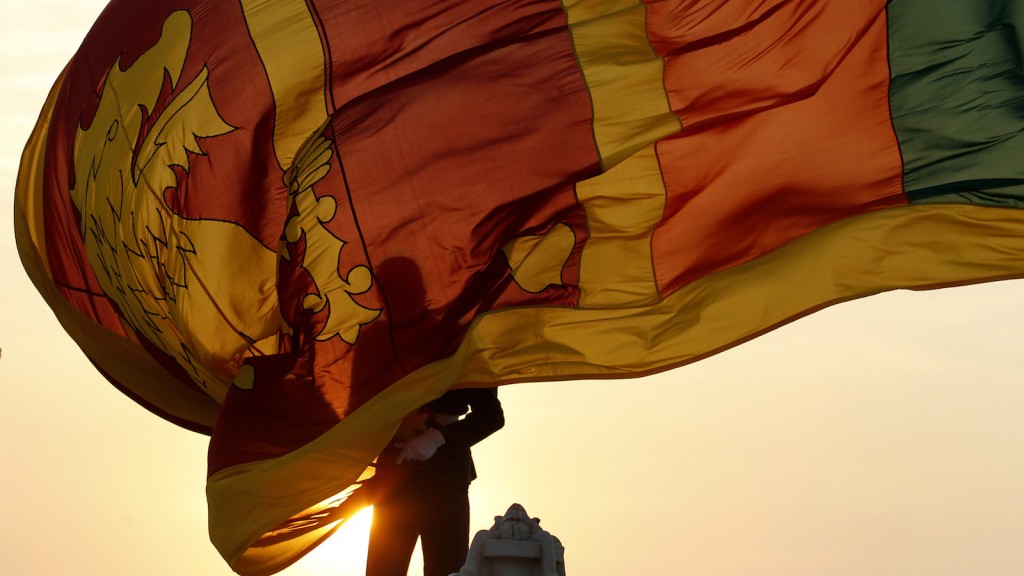Anagarika Dharmapala, A.E. Goonesinha and C.W.W. Kannangara, three of the radical champions of the early 20th century who were ‘managed’ by the conservative leaders who eventually negotiated ‘freedom’ from the British.
With the displacement from Rajarata, the heart, soul and body of their ancient culture in the 13th century the Sinhalese settled for safety over liberty; mediocrity over excellence.
By the 18th and 19th centuries the Sinhalese, after sustained exposure to the pressures of colonization had developed a self defeating defensive mechanism. This mechanism remains in full operation as we move into the 21st century and it is something that all Sri Lankans must view and review seriously.
Thus when they made partial progress either spiritually or materially during this period they tended to revert back to the safety of caste, religious or race identity and belonging. Moving another step forward towards excellence and freedom was not an option to be exercised. Freedom is a radical and not conventional value. In Sri Lanka unlike in India the idea of freedom was confined within conventional bounds in religion, society and politics alike. Radical champions like Anagarika Dharmapala, A.E. Goonesinha and C.W.W. Kannangara suffered deeply due to the absence of a radical tradition of freedom in this country. They were essentially misfits in a society retarded by conventional social respectability.
We can see this very clearly in the outcomes of the revival of monastic ordination in 1753 where admission to the Siyam Nikaya was confined to the ‘high born’ govi caste. Likewise the emergent middle class of the 19th century and beyond tended to frame their identity and wealth within tightly knit family and caste circles. Religious revivals of both Buddhists and Hindus of the 19th century significantly failed, to address the internal cancer of caste division. In fact the leading Bikkhus belonging to the caste stratified Siyam and Amarapura Nikayas were drawn into the middle class competition for social mobility with the Govi and three main low country castes, each vying through the new print media to prove their own superiority against the other. Only the smallest Nikaya – the Ramanna Nikaya established in1863 publicly eschewed all caste distinctions.
Thus whatever advantage was gained – spiritually or materially was secured on the basis of parochial distinctions. There was a fear of the freedom that beckoned those individuals who achieved a position of power. They could open the doors to the sources of power they discovered so that all society could benefit. Or they could restrict them to a preferred class. Unfortunately a majority of our leaders preferred the latter option – thus maintaining the social distance between the privileged and under-privileged in this island.
We must therefore look at those radical and marginal movements (on the nonviolent side) who were courageous enough to take their spiritual, social and economic freedoms to their logical conclusions, departing from the ways of their more conservative brethren. On the national scale the fate of free education is a case in point. On the Tamil side we have the example of the Jaffna Youth Congress in the 1930’s and on the Muslim side the life work of Dr. A.M.A. Azeez. Two prominent Sinhala intellectuals who also exhibited freedom of thought and action were Ven. Balangoda Ananda Maitreya and Dr. E.W. Adhikaram.
The fear of freedom is often disguised under the label “apekama” and this insecurity lies at the root of all narrow and adversarial operations mounted – particularly (but not exclusively) by Sinhala Buddhists from colonial times. In fact and in truth “apekama” refers to a rich, internal cultural value that is not tied down by external symbolism as such. It is an expression of the Sinhalese cultural inheritance, but like all heritages it has been mis-interpreted, abused and exploited.
The Sinhala Buddhists have been quick to celebrate a limited advantage and consolidate merely upon achieving half a point. In fact this half a point is blown out of all proportion to provide a cast iron guarantee against any further progress. Mediocrity (in the sense of partial achievement) is thus celebrated and entrenched within the popular imagination. Having taken the ball halfway up the pitch we erect an artificial goal and put the ball out of reach of everyone else without moving right up and attacking the true goal at the end of the pitch.
This is of course a cheap substitute for the real thing. But we have not known freedom or what is real for centuries.
###
Photos in article courtesy The Nation, Wikipedia and again Wikipedia respectively. Cover photo by REUTERS/Dinuka Liyanawatte, via Channel 4 News.
